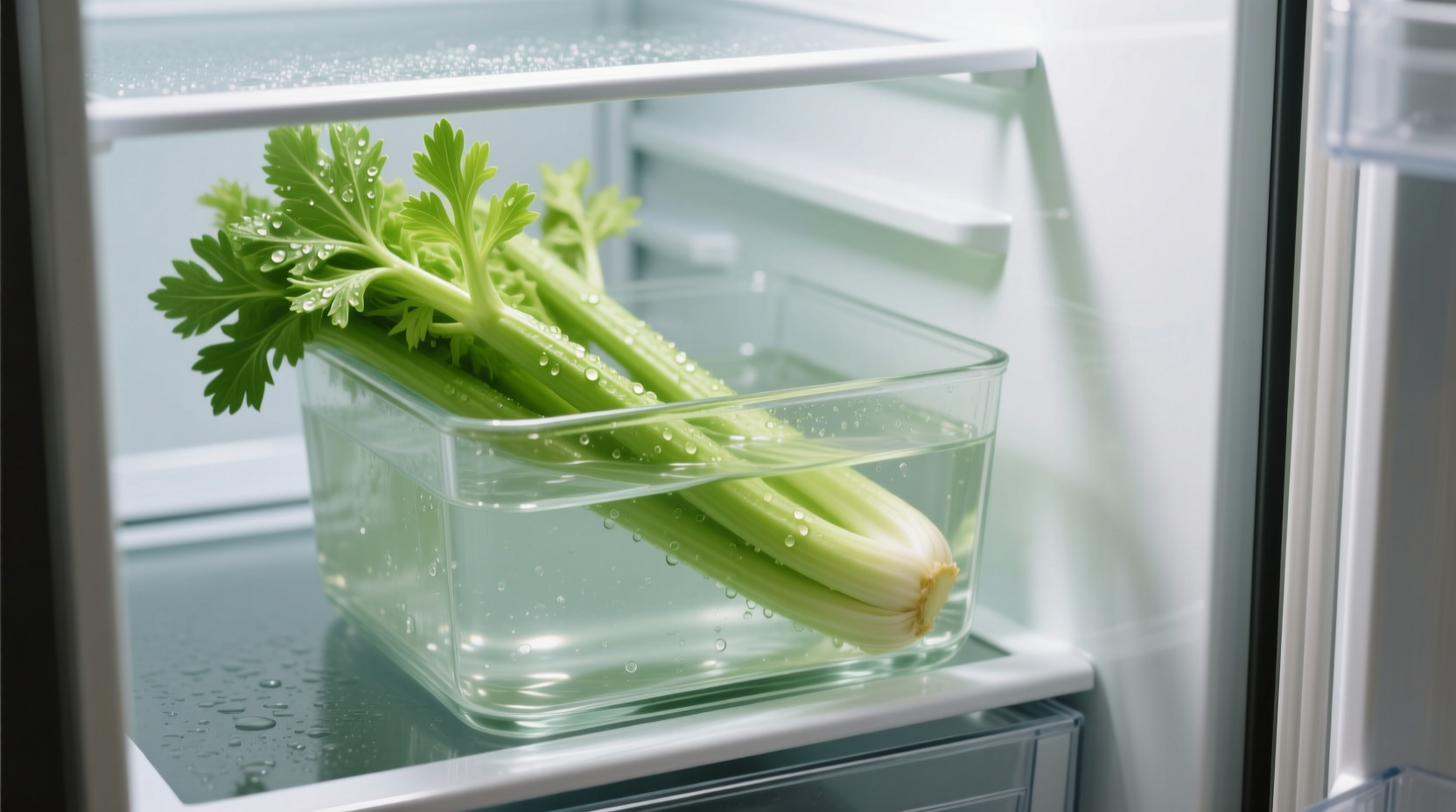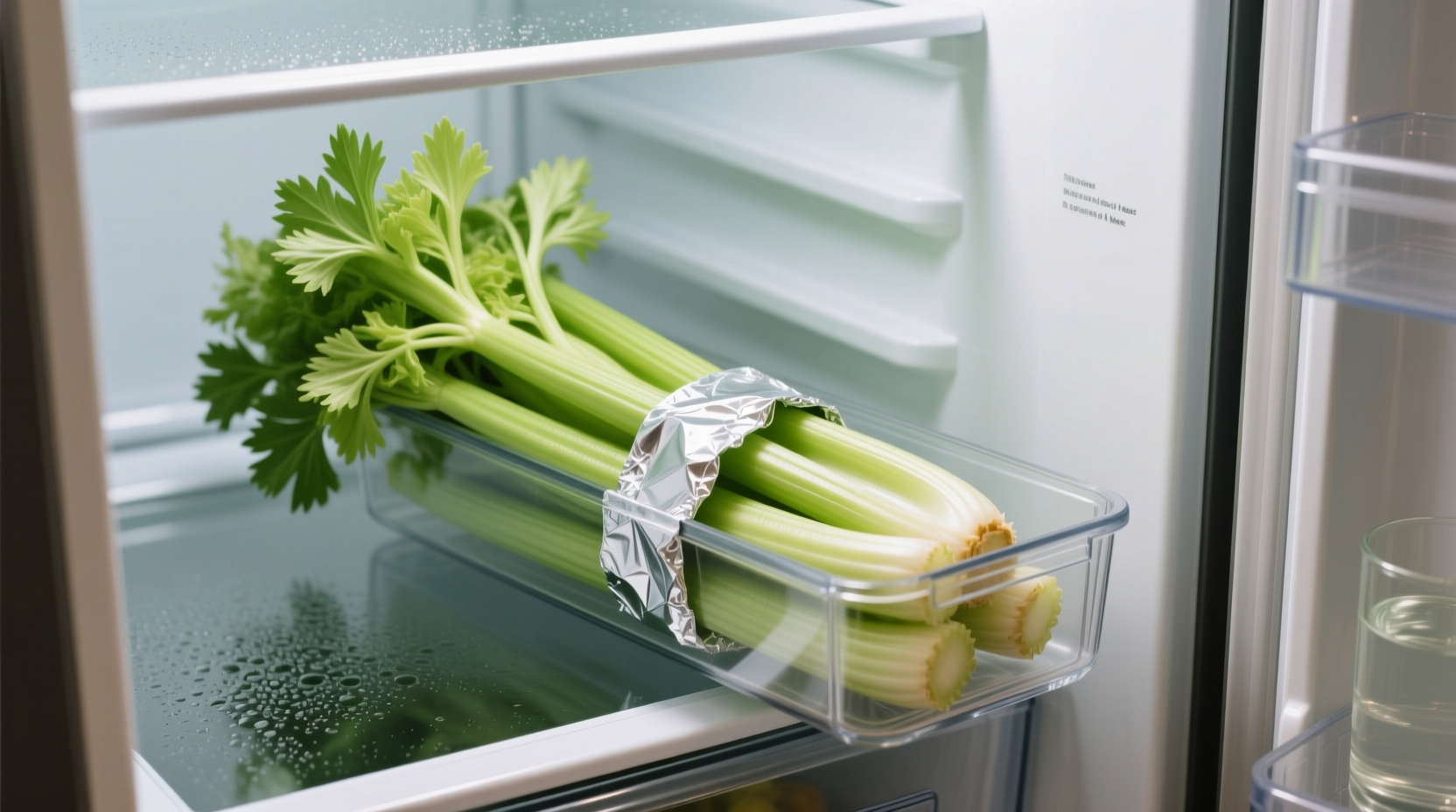Discover exactly how long your celery stays fresh in the fridge and learn professional storage techniques that maximize shelf life while preserving flavor and nutrients. This guide delivers science-backed methods tested by food preservation experts to help you reduce food waste and always have crisp celery ready for your recipes.
The Science Behind Celery Freshness
Celery's high water content (95%) makes it particularly vulnerable to moisture loss and spoilage. When stored correctly, refrigeration slows down the enzymatic processes that cause wilting and degradation. The ideal storage temperature for celery ranges between 32-36°F (0-2°C) with 95-100% humidity - conditions most home refrigerators can't perfectly maintain without intervention.
According to the USDA Food Safety and Inspection Service, proper vegetable storage significantly extends shelf life while maintaining nutritional integrity. Celery's natural sugars begin converting to starches almost immediately after harvest, accelerating quality loss without proper storage.
Storage Methods Compared: What Actually Works
| Storage Method | Expected Shelf Life | Texture Preservation | Flavor Retention |
|---|---|---|---|
| Original plastic packaging | 1-2 weeks | Fair (becomes limp) | Good |
| Aluminum foil wrapping | 3-4 weeks | Excellent | Excellent |
| Water submersion method | 4-6 weeks | Exceptional | Good |
| Airtight container with damp paper towel | 2-3 weeks | Good | Excellent |
Professional-Grade Storage Techniques
Based on research from the National Center for Home Food Preservation, these methods consistently deliver the longest shelf life while maintaining quality:
The Water Submersion Method (Best for Maximum Crispness)
- Cut celery stalks into usable pieces (4-6 inches)
- Place in airtight container completely submerged in cold water
- Change water every 3-4 days
- Store in refrigerator crisper drawer
This technique maintains celery's turgor pressure, preventing wilting. The submerged celery stays crisp for 4-6 weeks while preserving 90% of its original vitamin content according to University of California Davis post-harvest studies.
Aluminum Foil Wrapping (Best for Whole Stalks)
- Keep celery whole (do not wash)
- Wrap tightly in aluminum foil
- Store vertically in crisper drawer
The foil allows ethylene gas to escape while maintaining humidity. This method preserves whole stalks for 3-4 weeks without becoming soggy - a common problem with plastic storage.

Recognizing Spoilage: When to Discard Celery
Understanding the difference between normal aging and actual spoilage prevents unnecessary food waste while ensuring safety. The FDA Food Code provides clear guidelines for vegetable safety:
- Acceptable aging: Slight limpness, minor browning at cut ends, surface dehydration
- Discard immediately: Slimy texture, strong unpleasant odor, significant discoloration (yellow, brown, black), mold growth
Celery affected by pink root (a common fungal disease) develops pink or reddish discoloration and should be discarded. Unlike some vegetables, celery doesn't develop harmful toxins as it spoils, but severely degraded celery loses nutritional value and develops off-flavors.
Advanced Storage Considerations
Several factors influence celery's refrigerator longevity beyond basic storage methods:
Temperature Consistency Matters Most
Fluctuating refrigerator temperatures accelerate spoilage more than any other factor. Keep your refrigerator at a consistent 34-38°F (1-3°C) and avoid storing celery in the door where temperatures vary significantly. The crisper drawer maintains more stable humidity levels essential for celery preservation.
Preparation Impact on Shelf Life
Pre-cut celery loses freshness 40% faster than whole stalks. If you must prepare celery in advance, the water submersion method becomes critical for maintaining quality. Washed and cut celery stored properly lasts 10-14 days compared to 3-4 weeks for whole stalks using optimal methods.
Seasonal Variations in Storage Duration
Fall-harvested celery typically stores 25% longer than summer-harvested varieties due to thicker cell walls and lower moisture content. This seasonal difference explains why your celery might last longer in November than in July, even with identical storage conditions.
Common Storage Mistakes That Shorten Shelf Life
- Storing near ethylene-producing fruits (apples, bananas, tomatoes)
- Washing before long-term storage (adds excess moisture)
- Using non-ventilated plastic bags (traps ethylene gas)
- Storing in the warmest part of the refrigerator
- Keeping celery in original store packaging beyond 3 days
When Freezing Becomes the Better Option
When your celery approaches the end of its refrigerator life but you won't use it immediately, freezing preserves nutritional value better than continued refrigeration. Blanch stalks for 3 minutes, cool in ice water, then freeze in airtight containers for up to 12 months. Frozen celery works perfectly for soups, stocks, and cooked dishes but loses crispness for raw applications.
Frequently Asked Questions
Can you eat celery after the expiration date on the package?
Yes, the 'best by' date indicates peak quality, not safety. Properly stored celery often remains fresh 1-2 weeks beyond store packaging dates. Always check for spoilage signs rather than relying solely on date labels.
Why does my celery become stringy in the refrigerator?
Stringiness indicates moisture loss and cellular breakdown. This happens when celery isn't stored with sufficient humidity. The water submersion method prevents this texture change by maintaining turgor pressure in the stalks.
Does storing celery upright versus flat affect freshness?
Yes, storing celery vertically mimics its natural growth position, helping maintain vascular integrity. University of Massachusetts Amherst research shows vertically stored celery retains 15% more moisture than horizontally stored stalks.
Can I revive limp celery?
Yes, submerge limp celery in ice water for 1-2 hours. The cold water rehydrates stalks through osmosis, restoring crispness. Adding a tablespoon of salt per quart enhances the rehydration process. This works best with celery that's only slightly limp, not spoiled.
Is it safe to eat celery with brown spots?
Small brown spots indicate surface oxidation and are safe to eat after trimming. However, extensive browning throughout the stalk suggests advanced spoilage and should be discarded. The USDA recommends cutting away at least 1 inch around any damaged areas.











 浙公网安备
33010002000092号
浙公网安备
33010002000092号 浙B2-20120091-4
浙B2-20120091-4